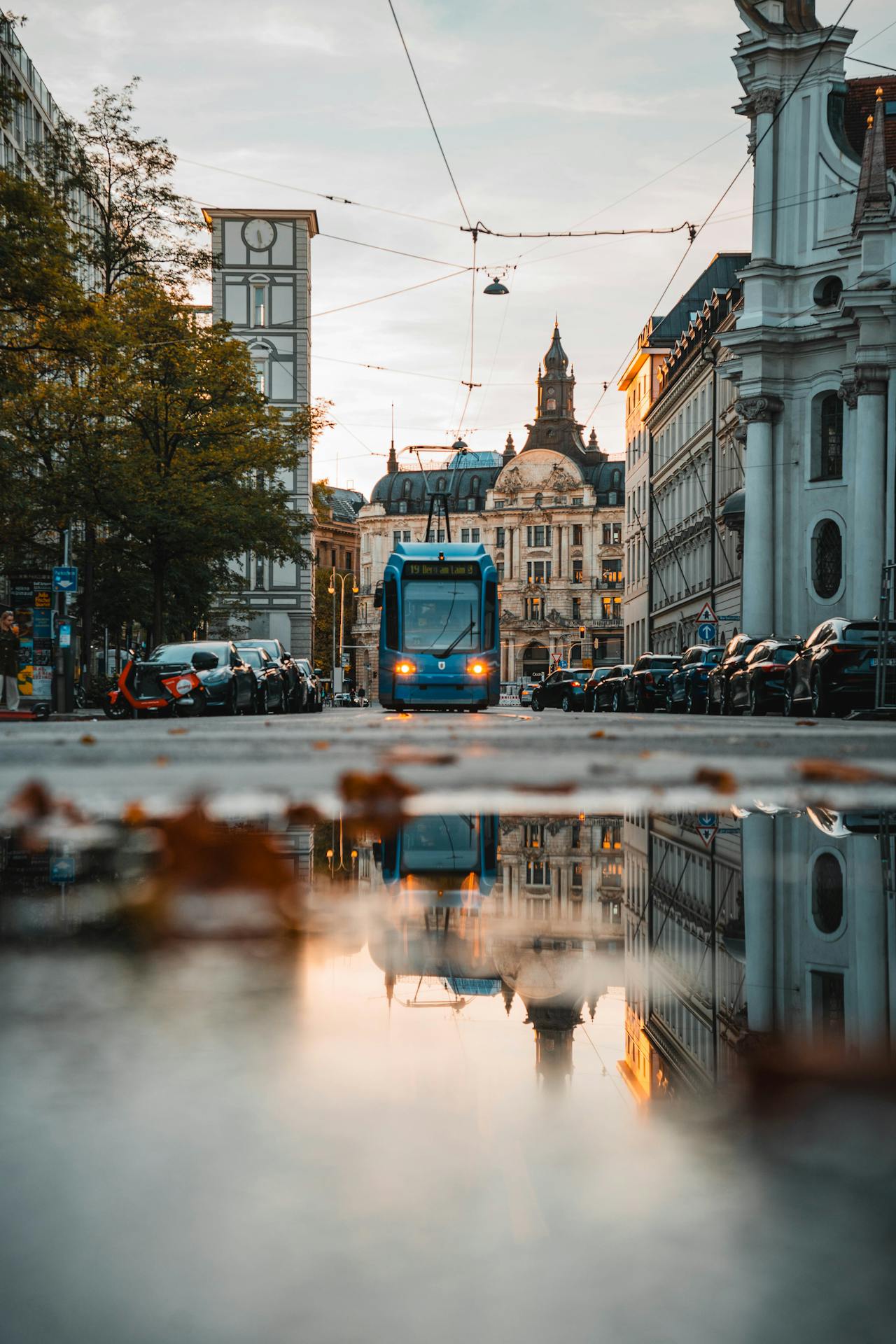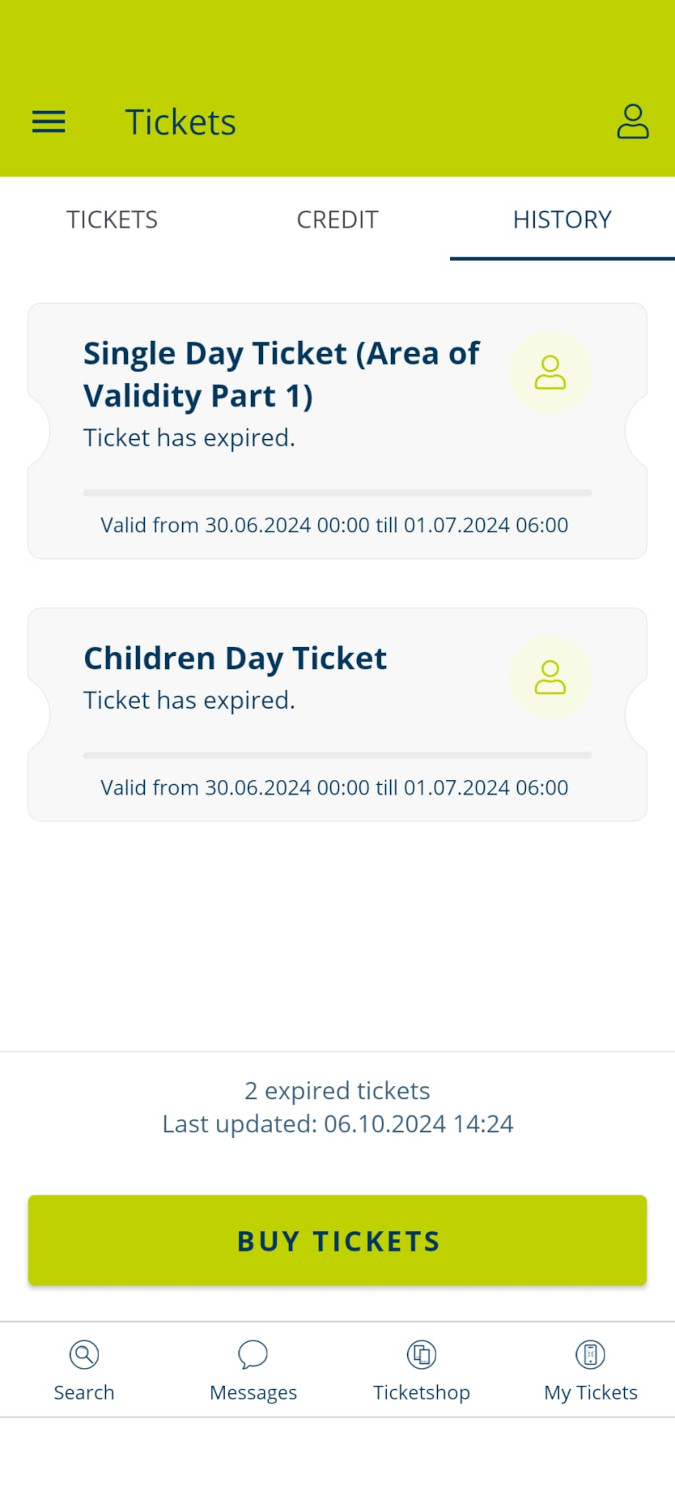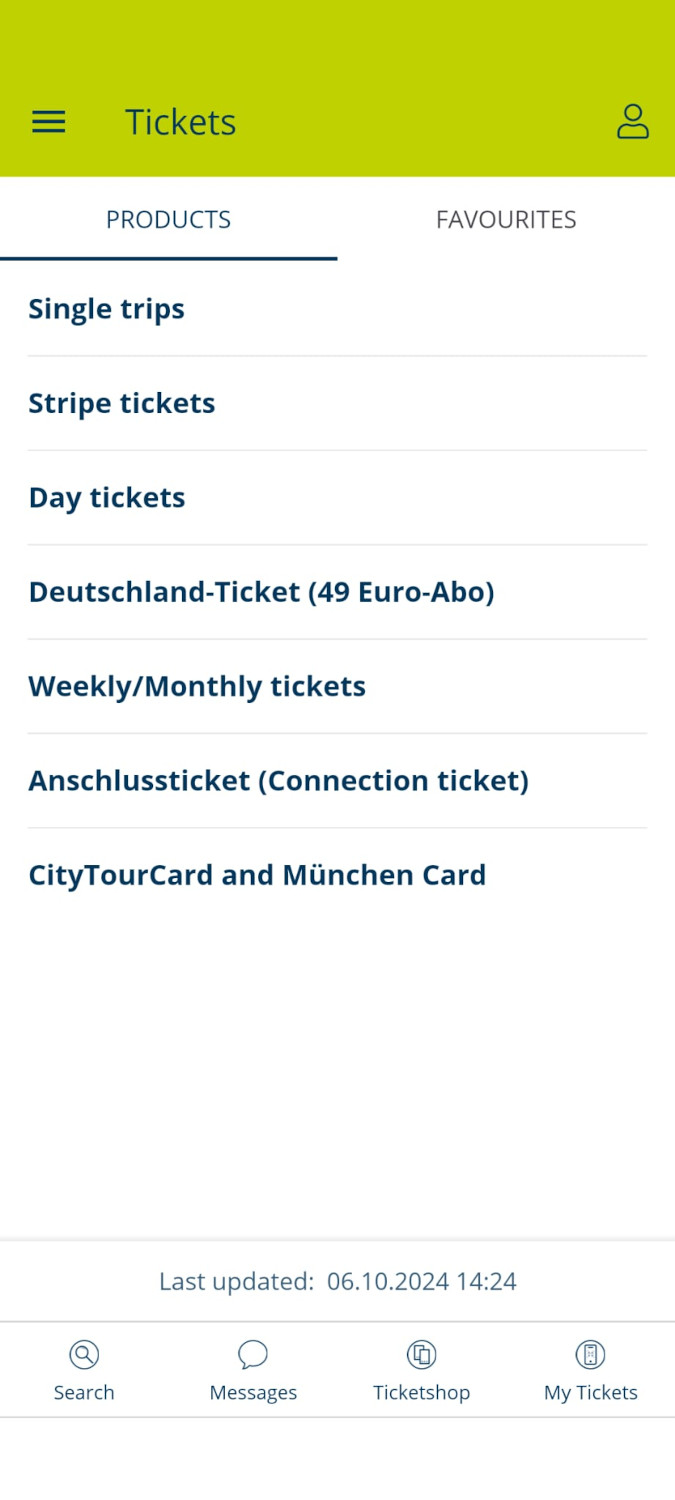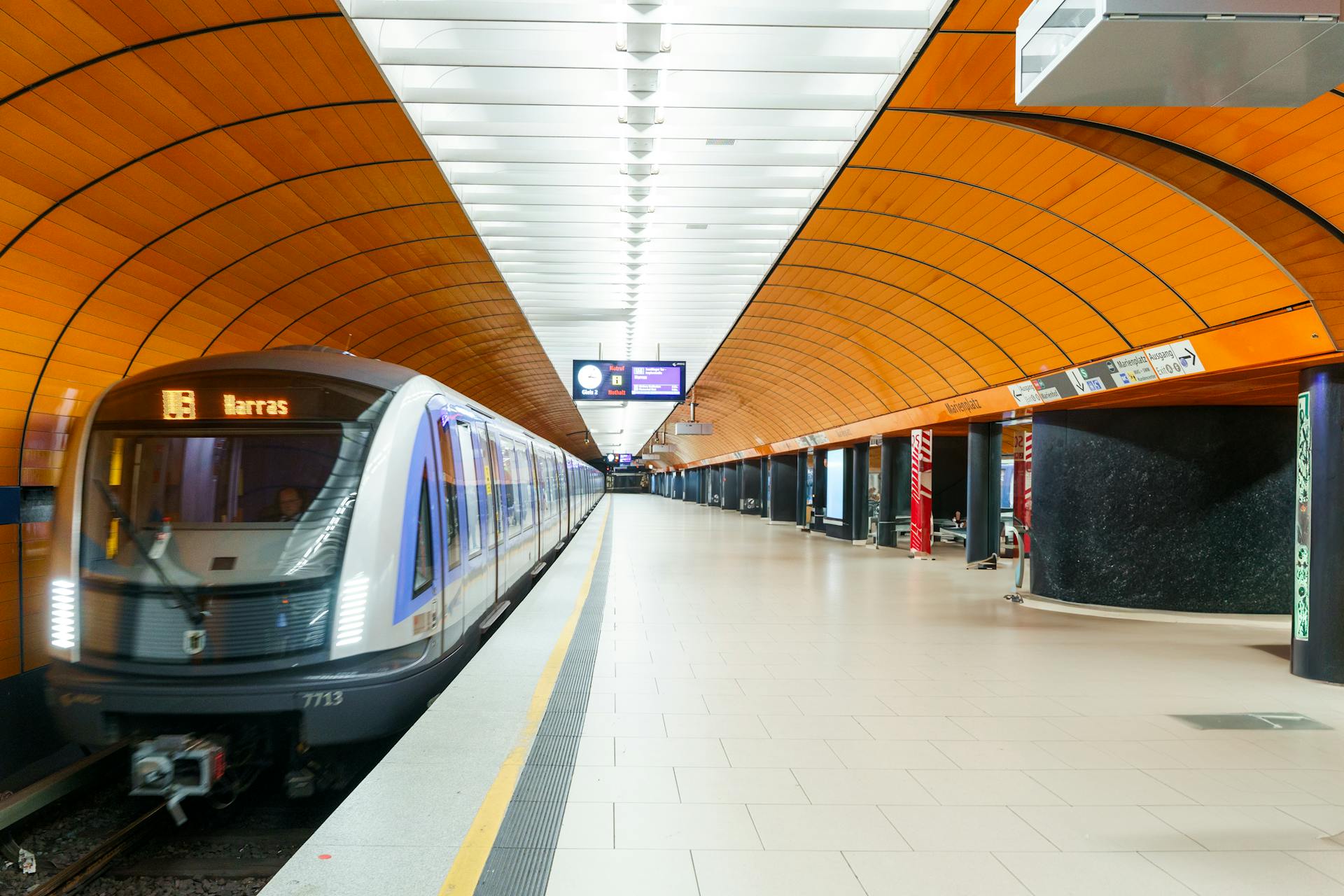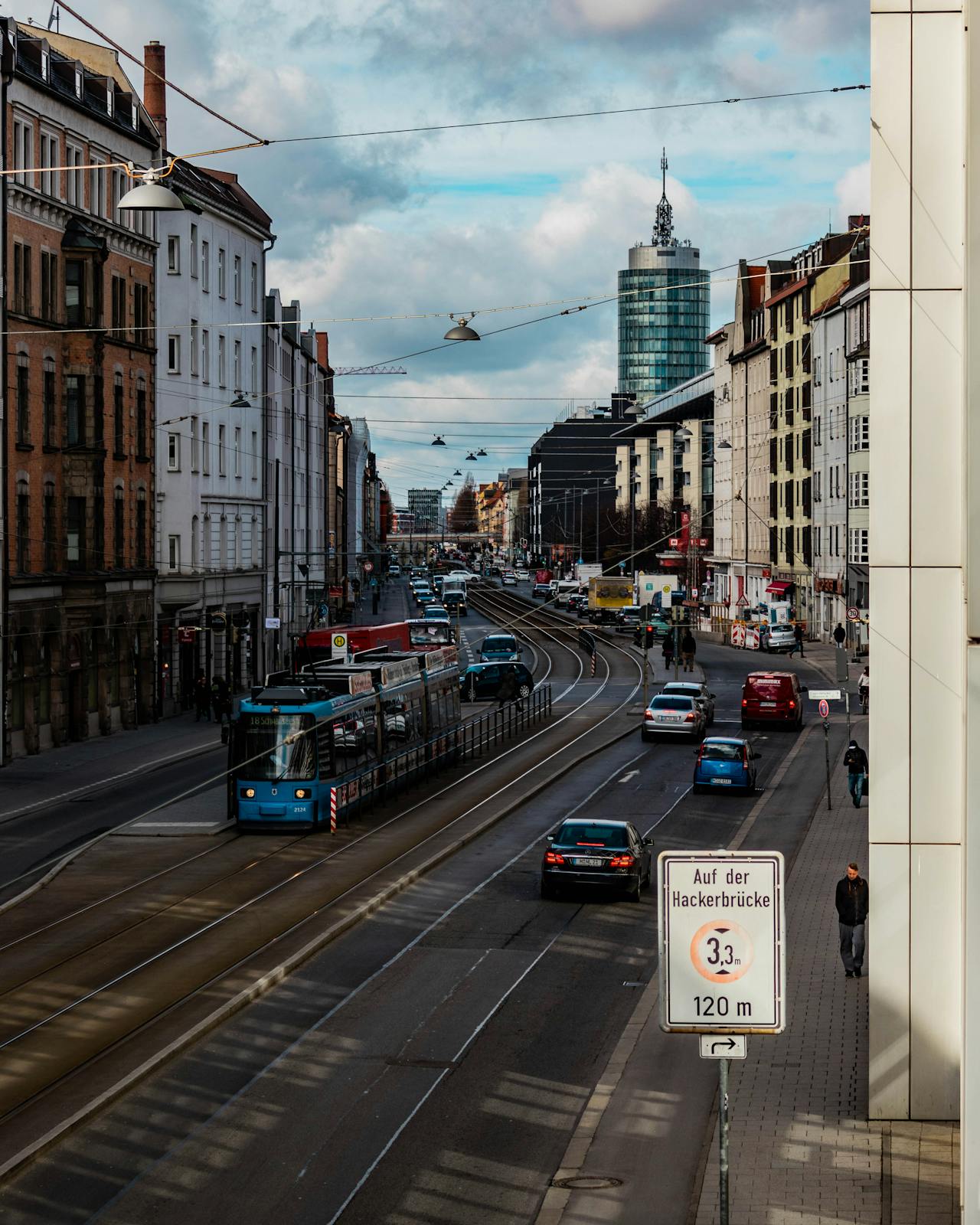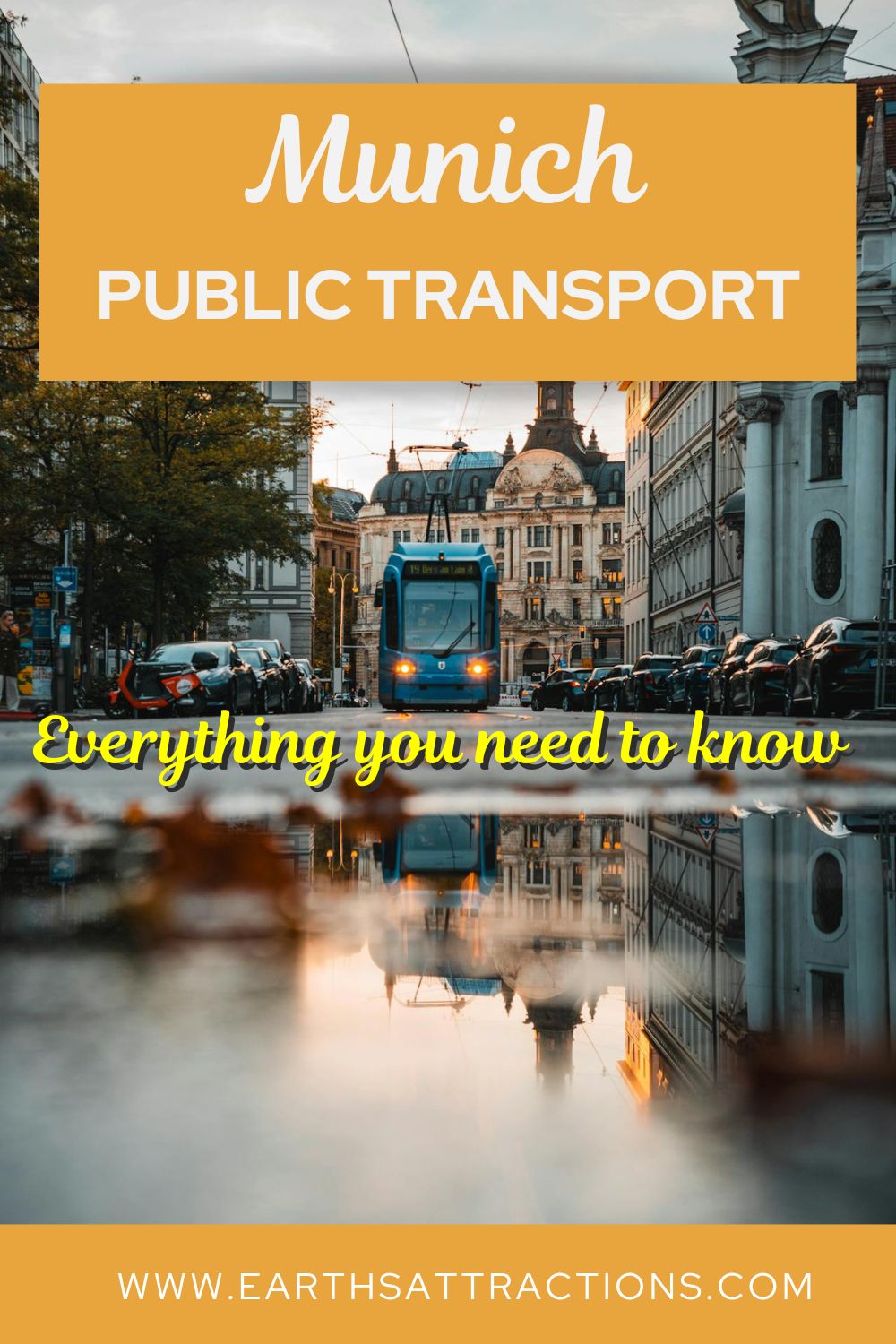Are you planning a trip to Munich and wondering how to get around? You’re in luck! Munich’s public transportation system is one of the best in Europe, and I’m here to share everything you need to know to navigate the city like a local.
In this guide, I’ll walk you through everything you need to know about public transportation in Munich, from how to buy tickets to the different types of transport available, and from insider tips on saving money.
So, if you’re planning to visit Munich, this will be your go-to guide on how to get around easily.
Everything You Need to Know About Public Transportation in Munich: Your Ultimate Guide
Why Munich’s Public Transport Will Make You Fall in Love with the City
When I first arrived in Munich, I was immediately impressed by how easy it was to get around. The public transportation system here is not just efficient; it’s a gateway to experiencing the city’s charm. Whether you’re heading to Marienplatz for some sightseeing or venturing out to the nearby attractions for a relaxing afternoon, Munich’s public transport has got you covered.
I have to add that this was the first time for me when I felt safe in public transport, where I traveled and didn’t experience crowds, and when it did not smell bad (and yes, I am comparing, from this point of view, Munich to my hometown, Bucharest, Romania, but also Paris or Vienna).
So, while in many cities I prefer taxis/Uber or similar (regardless of the cost), I can say that in Munich public transport is the best option.
Munich’s Public Transport: An Overview
Munich’s public transport system is run by the MVV (Münchner Verkehrs- und Tarifverbund) and includes a comprehensive network of trains, trams, buses, and the U-Bahn (underground metro). The great thing about public transport in Munich is that it’s well-organized, clean, and always on time.
Whether you’re exploring the city’s tourist hotspots or commuting to a meeting, you can get to almost any part of Munich without needing a car. I found it super easy to use, and it’s perfect for both tourists and locals.
Plus, Munich’s public transport operates on a single ticketing system, meaning one ticket will get you access to multiple forms of transport—S-Bahn (suburban trains), U-Bahn (subway), buses, or trams.
Getting Started: Tickets and Passes
One of the first things you’ll need to do is get a ticket. Here’s a quick breakdown of the most common options:
Single Ticket: Great for a one-time trip. It allows you to travel within certain zones for a one-way journey. You can use it on any form of public transport (U-Bahn, S-Bahn, bus, or tram).
Day Ticket (Tageskarte): If you plan to use public transport frequently in one day, this is your best bet. It offers unlimited travel across all zones for a full day.
Group Day Ticket: If you’re traveling with friends or family, the group day ticket is a money-saver. It allows up to five people to travel together at a reduced rate.
Weekly and Monthly Tickets: For those staying longer, these tickets offer unlimited travel for a week or a month. If you’re in Munich for a business trip or an extended stay, these options can save you a lot of money.
Buying Tickets: Everything You Need to Know
You can buy tickets at ticket machines in U-Bahn and S-Bahn stations or via the MVV mobile app, which I found incredibly convenient (especially when I didn’t have cash.
Frankly, we only used the app. Because it is easy to use, you can pay with Google Pay which we both have configured on our phones AND you have the tickets on the phone, so always with you.
Make sure that if you are traveling as a group (a family can be a group!) and one of you buys the tickets, that person is always with you – in case they need to show proof of the ticket purchase.
Also, please be mindful of the areas. All the main attractions of the city are in the center – the M area. But if you need to go further, then you need to choose the extended area (more expensive, but not by much).
Here is where you can buy tickets for public transportation in Munchen:
- Ticket machines at U-Bahn and S-Bahn stops
- In Busses and trams
- The MVV app (my personal favorite – we only used this) or the MVG App.
We liked the MVV App – easy to use, very helpful in planning each day and with a menu in English – so easy to understand the directions.
The Munich CityTourCard and the Munich Card
There are two more cards available (both in multiple options.)
They both offer discounts.
The Munich CityTourCard includes discounts to over 80 tourist attractions – in the app I could select 3 days as the minimum period for this.
For The Munich Card (Munchen Card) you can choose from 2 days – to many more – as validity. It also includes discounts to various museums and unlimited trips within the selected area.
In order to decide which one is better for you, you need to first create an itinerary for Munich and see if the total cost of the transportation tickets + entrance fees to the tourist attractions are cheaper or more expensive than the price of one of the cards above + the entrance tickets with discounts.
While I am a huge fan of such combos (and I use them when I travel), I will add that this year we did not use such a card with discounts because, as it turned out, based on our itinerary it was not a good option.
Traveling to and from Munich Airport
One of the biggest advantages of Munich’s public transportation system is how easy it is to get to and from Munich International Airport. The S-Bahn’s S1 and S8 lines run directly from the airport to central Munich, with trains departing every 10 minutes. The journey takes about 40 minutes, making it a convenient option for anyone flying into the city.
Whether you’re heading straight to your hotel or have a meeting in the city center, the airport connections make it easy to start your Munich adventure stress-free.
Public Transport During Oktoberfest
If you’re visiting Munich during Oktoberfest, you’ll be pleased to know that public transport is the best way to get to the festival grounds at Theresienwiese. The U4 and U5 lines, which drop you right at the Oktoberfest entrance.
On a funny note, I installed the app (and used it) late June – early July. I am writing this article beginning of October – and in the app I have a notice about the public transportation options for Oktoberfest.
Isn’t this cool?
And another thing: public transportation in Munich is boosted during major events like Oktoberfest, with extended hours and extra trains to accommodate the crowds. A day ticket is ideal during this time, especially if you plan to travel across multiple zones or head out after the festivities.
Tips for Using Public Transport in Munich
Check timetables: Although trains and buses run frequently, it’s still a good idea to check schedules, especially for trips outside the city center.
Use the MVV app: The app is a lifesaver when it comes to finding the best routes, buying tickets, and checking live updates.
In fact, this is what we used each day during our trip.
I had a pre-made itinerary (I like to plan) so we checked to see what areas we need to buy tickets for and then we checked the routes. As the app shows you all the available options, you can choose whichever you want.
We had no issue in the city. Well, except for one, when we got off the S-Bahn a station early (we were going to Motorworld), and when we asked for the street that was on the app, a few people (locals, some selling baked goods at that U-Bahn station, and a Bud striver) did not know what street we were referring to.
But, in the same bus, there was a lady (older), really kind who got up from her chair and came to the bus’s door and told us that we need to take the S-Bahn one more station, and from there, after taking the stairs, we would see the street mentioned in the app.
I will also add, that I used data throughout the trip. Mobile data. It was not cheap – in fact it was basically free (from my subscription I have roaming data included).
Peak hours: Avoid traveling during rush hour (around 7-9 a.m. and 4-6 p.m.) if possible, as trains and buses can get quite crowded.
I cannot say though that it is very crowded. We would leave around 8.30-9, true, and the means of public transportation were not crowded at all – there were many empty seats available or just 3-4 people without a seat.
One exception was one evening when we were on our way back to the hotel and part of the trip was with a U-Bahn that led to the stadium – where there was a big match (when we visited UEFA EURO 2024 was taking place in Germany, some of the matches being held in Munich).
Bicycle integration: Munich is a bike-friendly city, and you can easily take your bike on most public transport (with a separate bike ticket).
However, you can only take your bike EXCEPT on peak hours. Plus, you can only take it on on the subway, suburban trains or designated regional trains in Munich – and, again, you need a ticket for the bike (the MVV app offers details). You cannot take the bike on trams or busses.
Night service: If you’re out late, the night buses and trams run throughout the city. Make sure to check routes and schedules in advance.
Final Thoughts: Why You’ll Love Using Public Transportation in Munich
Munich’s public transportation system is not only efficient but also incredibly easy to use, whether you’re a seasoned traveler or visiting for the first time. With options ranging from U-Bahn to trams and buses, you’ll find getting around Munich to be both stress-free and enjoyable. Plus, with its wide range of ticketing options, you can explore this beautiful city without breaking the bank.
So, whether you’re planning a trip to Munich for Oktoberfest, visiting the city’s famous sights, or commuting from the airport, Munich’s public transport system has got you covered.
If you’ve already been to Munich, I’d love to hear about your experiences using the public transport! Share your tips and stories in the comments.
Photo sources: the MVV app photos are my own. The other photos are not mine because… well, I did not take any photos of the metro, tram, buses etc. So, here are the sources: 1, 2, 3

